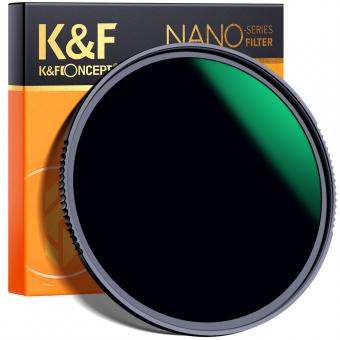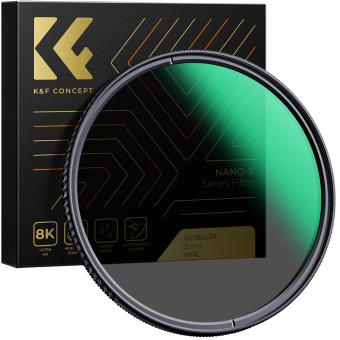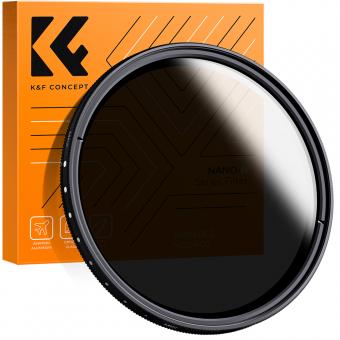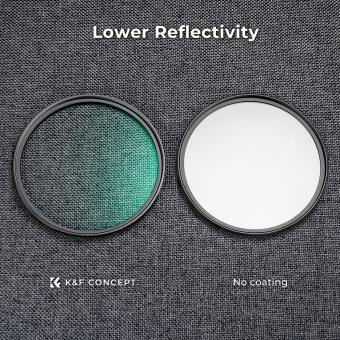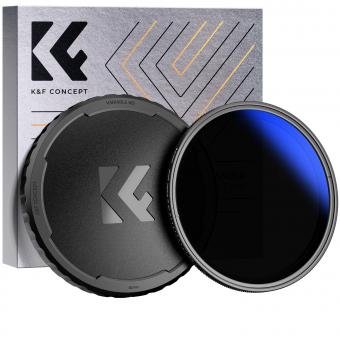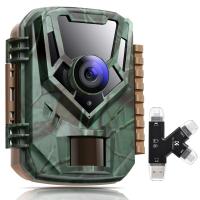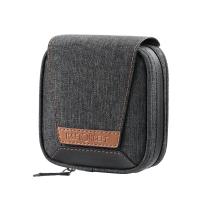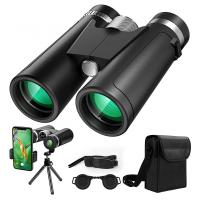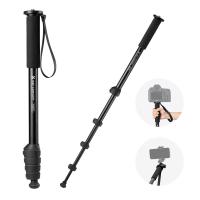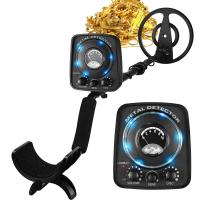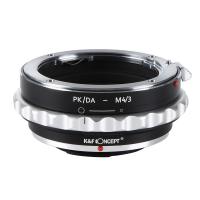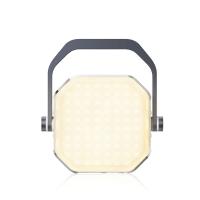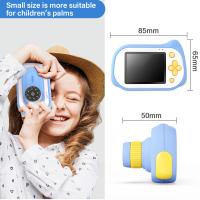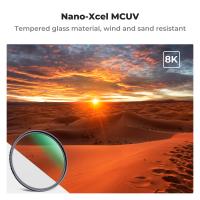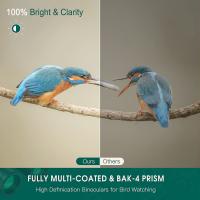Which Nd Filter Size ?
The size of an ND filter depends on the diameter of the lens you are using. ND filters are available in various sizes, typically ranging from 49mm to 82mm. To determine the correct size for your lens, you need to check the front of the lens barrel or the lens cap, where the filter size is usually indicated. Alternatively, you can measure the diameter of the lens using a caliper or a ruler. Once you know the size, you can purchase an ND filter that matches the diameter of your lens.
1、 Understanding ND Filters: Types and Uses
The choice of ND filter size depends on the diameter of the lens you are using. ND filters come in various sizes, typically ranging from 49mm to 82mm, with some larger sizes available for specialty lenses. To determine the correct size, you need to know the filter thread diameter of your lens, which is usually marked on the front of the lens or can be found in the lens specifications.
It is important to note that if you have multiple lenses with different filter thread diameters, you will need to purchase separate ND filters for each lens or use step-up or step-down rings to adapt the filter to different sizes.
In terms of the latest point of view, there have been advancements in filter systems that use square or rectangular filters with a filter holder. These systems allow for more flexibility as they can be used with different lens sizes by simply changing the adapter ring. This eliminates the need to purchase multiple filters for different lenses.
Additionally, some photographers prefer larger filter sizes as they can be used on smaller lenses with the help of step-up rings, but the reverse is not possible. Therefore, investing in larger filter sizes can provide more versatility in the long run.
Ultimately, the choice of ND filter size depends on your specific lens and shooting needs. It is recommended to check the filter thread diameter of your lens and consider investing in a filter system that offers adaptability to different lens sizes.
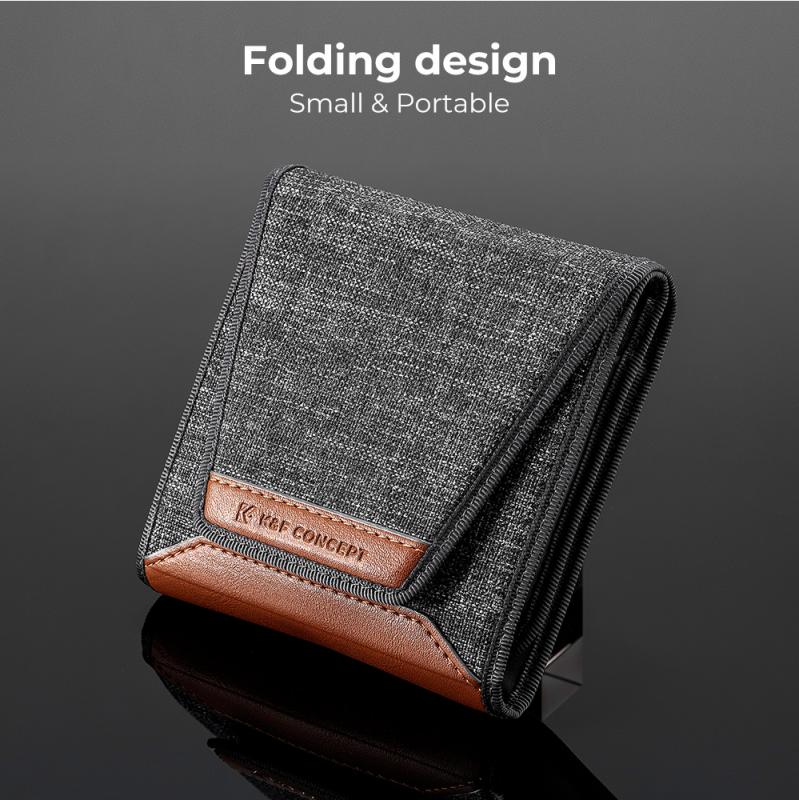
2、 Choosing the Right ND Filter Size for Your Lens
When it comes to choosing the right ND filter size for your lens, there are a few factors to consider. The first and most important factor is the diameter of your lens. ND filters come in various sizes, typically ranging from 49mm to 82mm, so it's crucial to know the diameter of your lens before making a purchase.
To determine the diameter of your lens, you can either check the front of the lens barrel, where the filter threads are located, or refer to the lens specifications provided by the manufacturer. Once you know the diameter, you can select an ND filter with the corresponding size.
It's worth noting that some lenses have different filter thread sizes, especially if you're using lenses from different manufacturers. In such cases, you may need to purchase multiple ND filters or invest in a step-up or step-down ring to adapt the filter to your lens.
Additionally, it's important to consider the type of photography you'll be doing and the desired effect you want to achieve. If you primarily shoot landscapes or long exposures, a larger ND filter size may be more suitable to minimize vignetting. On the other hand, if you mainly shoot portraits or street photography, a smaller ND filter size may be sufficient.
Lastly, it's worth mentioning that as technology advances, lens designs are evolving, and new lenses may have different filter thread sizes. Therefore, it's always a good idea to double-check the lens specifications or consult with a professional before purchasing an ND filter.
In conclusion, choosing the right ND filter size for your lens depends on the diameter of your lens, the type of photography you'll be doing, and the desired effect. By considering these factors, you can ensure that you select the appropriate ND filter size to enhance your photography.
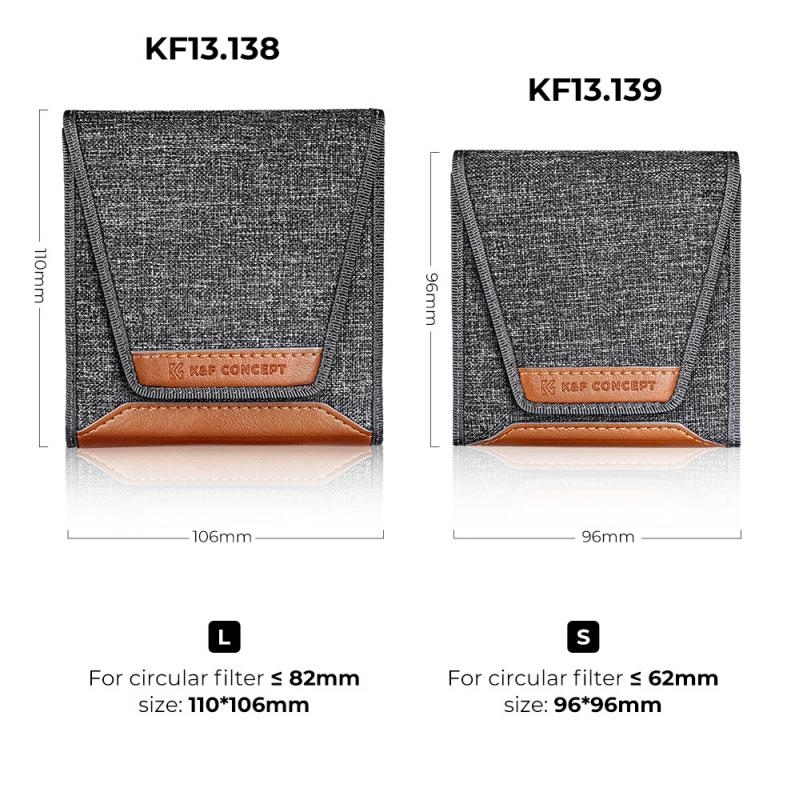
3、 Common ND Filter Sizes and Compatibility with Lens Threads
Common ND filter sizes vary depending on the lens thread size of the camera. The most common filter sizes are 52mm, 58mm, 67mm, 72mm, 77mm, and 82mm. These sizes are compatible with a wide range of lenses from different manufacturers.
However, it is important to note that with the increasing popularity of mirrorless cameras, lens thread sizes are not the only consideration when choosing an ND filter. Many mirrorless cameras, especially those with smaller form factors, use a filter adapter system or a filter holder system instead of screwing filters directly onto the lens. These systems allow for the use of larger filters, such as 100mm or 150mm square filters, which can be used with multiple lenses by using different adapter rings.
Additionally, some lenses have non-standard filter thread sizes, requiring the use of step-up or step-down rings to fit the desired filter size. These rings allow you to adapt a filter with a different thread size to your lens.
It is always recommended to check the lens thread size or the filter system compatibility of your specific camera and lens before purchasing an ND filter. This information can usually be found in the camera or lens manual or by searching online.
In conclusion, the most common ND filter sizes are 52mm, 58mm, 67mm, 72mm, 77mm, and 82mm. However, with the rise of mirrorless cameras and filter adapter systems, larger filter sizes like 100mm or 150mm square filters are becoming more popular. It is important to check the compatibility of your camera and lens before purchasing an ND filter.
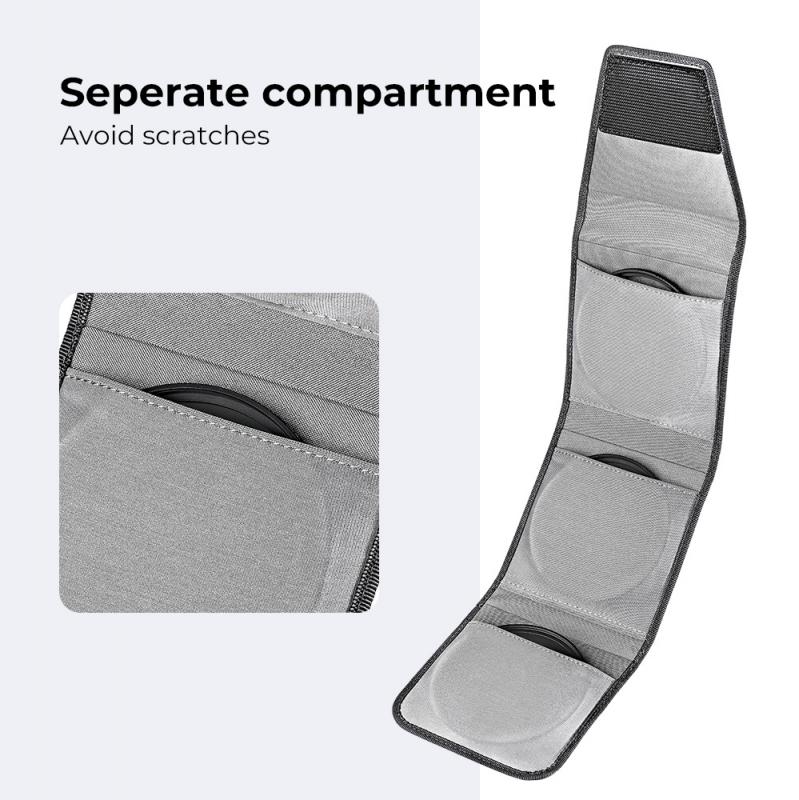
4、 ND Filter Size Considerations for Different Photography Genres
When it comes to choosing the right ND filter size for different photography genres, there are a few considerations to keep in mind. The size of the filter you choose will depend on the type of lens you are using, the focal length, and the specific requirements of your photography genre.
For landscape photography, a common recommendation is to use a larger filter size, such as 77mm or 82mm. This allows you to easily switch between lenses without having to buy multiple filters. Additionally, a larger filter size helps to minimize vignetting, which can be a common issue when using wide-angle lenses.
In portrait photography, a smaller filter size, such as 52mm or 58mm, may be sufficient. Since portrait lenses typically have narrower focal lengths, a smaller filter size can be more practical and cost-effective.
For macro photography, the choice of ND filter size will depend on the specific macro lens you are using. Some macro lenses have larger front elements, requiring larger filter sizes. It is important to check the lens specifications and choose a filter size that matches the lens diameter.
In recent years, there has been a trend towards using square or rectangular filter systems, such as the popular 100mm or 150mm sizes. These systems offer more flexibility as they can be used with different lenses by simply using adapter rings. They also allow for the use of graduated ND filters, which are particularly useful in landscape photography to balance exposure between the sky and the foreground.
Ultimately, the choice of ND filter size will depend on your specific photography needs and equipment. It is always recommended to research and consider the lens specifications, focal length, and shooting requirements before making a purchase.


